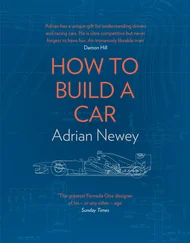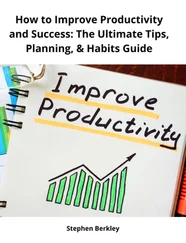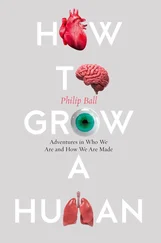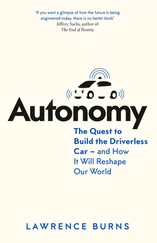Eyal, Nir - Hooked - How to Build Habit-Forming Products
Здесь есть возможность читать онлайн «Eyal, Nir - Hooked - How to Build Habit-Forming Products» весь текст электронной книги совершенно бесплатно (целиком полную версию без сокращений). В некоторых случаях можно слушать аудио, скачать через торрент в формате fb2 и присутствует краткое содержание. Год выпуска: 2014, Издательство: Nir Eyal, Жанр: Старинная литература, на английском языке. Описание произведения, (предисловие) а так же отзывы посетителей доступны на портале библиотеки ЛибКат.
- Название:Hooked: How to Build Habit-Forming Products
- Автор:
- Издательство:Nir Eyal
- Жанр:
- Год:2014
- ISBN:нет данных
- Рейтинг книги:5 / 5. Голосов: 1
-
Избранное:Добавить в избранное
- Отзывы:
-
Ваша оценка:
- 100
- 1
- 2
- 3
- 4
- 5
Hooked: How to Build Habit-Forming Products: краткое содержание, описание и аннотация
Предлагаем к чтению аннотацию, описание, краткое содержание или предисловие (зависит от того, что написал сам автор книги «Hooked: How to Build Habit-Forming Products»). Если вы не нашли необходимую информацию о книге — напишите в комментариях, мы постараемся отыскать её.
Hooked: How to Build Habit-Forming Products — читать онлайн бесплатно полную книгу (весь текст) целиком
Ниже представлен текст книги, разбитый по страницам. Система сохранения места последней прочитанной страницы, позволяет с удобством читать онлайн бесплатно книгу «Hooked: How to Build Habit-Forming Products», без необходимости каждый раз заново искать на чём Вы остановились. Поставьте закладку, и сможете в любой момент перейти на страницу, на которой закончили чтение.
Интервал:
Закладка:
Rewards from the Lord
Gruenewald says the connection people have with scripture taps into deep emotions that “we need to use responsibly.” Readers who form a habit of using the app turn to it not only when they see a notification on their phone, but also whenever they feel low and need a way to lift their spirits.
“We believe that the Bible is a way God speaks to us,” Gruenewald says. “When people see a verse, they see wisdom or truth they can apply to their lives or a situation they’re going through.” Skeptics might call this “subjective validation,” and psychologists call it the “Forer Effect,” but to the faithful, it amounts to personally communicating with God.
Upon opening the Bible app, I find a specially selected verse waiting for me on the topic of “Addictions.” With just two taps I’m reading 1 Thessalonians 5:11 — encouragement for the “children of the day,” imploring them with the words, “let us be sober.” It’s easy to see how these comforting words could serve as a sort of prize wrapped inside the app, helping readers feel better.
Gruenewald says his Bible app also offers an element of mystery and variability. “One woman would stay up until just past midnight to know what verse she had received for her next day,” Gruenewald says. The unknown — in this case, which verse will be chosen for the reader and how it relates to their personal struggle — becomes an important driver of the reading habit.
As for my own reward, after finishing my verse, I received affirmation from a satisfying ”Day Complete!” screen. A check mark appeared near the scripture I had read and another one was placed on my reading plan calendar. Skipping a day would mean breaking the chain of checked days, employing what psychologists call the “endowed progress effect” — a tactic also used by video game designers to encourage progression.
As habit-forming as the Bible app’s reading plans can be, they are not for everyone. In fact, Gruenewald reports most users downloaded the app but never register for an account with YouVersion. Millions choose to not follow any plan, opting instead to use the app as a substitute for their paper Bibles. But to Gruenewald, using the app in this way suits him fine. Unregistered readers are still helping to grow the app. In fact, social media is abuzz with the 200,000 pieces of content shared from the app every 24-hours.
To help the app spread, a new verse greets the reader on the first page. Below the verse, a large blue button reads, “Share Verse of the Day.” One click and the daily scripture is blasted to Facebook or Twitter.
The drivers behind recently read scripture have not been widely studied. However, one reason may be the reward portraying oneself in a positive light, also known as the “humblebrag.” [cxxviii]A Harvard meta-analysis entitled “Disclosing information about the self is intrinsically rewarding” found the act, “engages neural and cognitive mechanisms associated with reward.” [cxxix]In fact, sharing feels so good that one study found “individuals were willing to forgo money to disclose about the self.”
There are many opportunities to share verse from within the Bible app, but one of Gruenewald’s most effective distribution channels is not online but in-row — that is, in the pews where church-goers sit side by side every week.
“People tell each other about the app because they use it surrounded by people who ask about it,” Gruenewald says. The app always sees a spike in new downloads on Sundays when people are most likely to share it through word of mouth.
However, nothing signals the reign of Gruenewald’s Bible app quite like the way some preachers have come to depend upon it. YouVersion lets religious leaders input their sermons into the app so their congregants can follow along in real-time — book, verse, and passage — all without flipping a page. Once the head of the church is hooked, the congregation is sure to follow.
Using the Bible app at church not only has the benefit of driving growth, it also builds commitment. Every time users highlight a verse, add a comment, create a bookmark or share from the app, they invest in it.
As described in an earlier chapter, Dan Ariely and Michael Norton have shown the effect small amounts of work have on the way people value various products. This “IKEA effect” illustrates the connection between labor and perceived worth.
It is reasonable to think that the more readers put into the Bible app in the form of small investments, the more it becomes a repository of their history of worship. Like a dog-eared book, full of scribbled insights and wisdom, the app becomes a treasured asset that won’t easily be discarded. The more readers use the Bible app, the more valuable it becomes to them. Switching to a different digital Bible — God forbid — becomes less likely with each new revelation users type into (or extract from) the app, further securing YouVersion’s dominion.
Gruenewald claims he is not in competition with anyone, but he does on occasion rattle off the App Store categories where his app holds a high ranking. His app’s place at the top of the charts appears secure now that the Bible has crossed its 100 millionth install. But Gruenewald plans to continue sifting through the terabytes of data in search of new ways to increase the reach of his app and make his version of the Bible even more habit-forming. To its tens of millions of regular users, Gruenewald’s app is a Godsend.
***
Remember and Share
- The Bible app was far less engaging as a desktop website. The mobile interface increased accessibility and usage by providing frequent triggers.
- The Bible app increases users' ability to take action by front-loading interesting content and providing an alternative audio version.
- By separating the verses into small chunks, users find the Bible easier to read on a daily basis. Not knowing what the next verse will be adds a variable reward.
- Every annotation, bookmark and highlight stores data (and value) in the app, further committing users.
8. HABIT TESTING AND WHERE TO LOOK FOR HABIT-FORMING OPPORTUNITIES
Now that you have an understanding of the Hook Model and have reflected on the morality of influencing user behavior, it is time to get to work. Running your idea through the four phases of the model will help you discover potential weaknesses in your product’s habit-forming potential.
Does your users’ internal trigger frequently prompt them to action? Is your external trigger cueing them when they are most likely to act? Is your design simple enough to make taking the action easy? Does the reward satisfy your users’ need while leaving them wanting more? Do your users invest a bit of work in the product, storing value to improve the experience with use and loading the next trigger?
By identifying where your technology is lacking, you can focus on developing improvements to your product where it matters most.
Habit Testing
By following the “Do This Now” sections in previous chapters, you should have enough knowledge to prototype your product. But simply coming up with ideas is not enough, and creating user habits is often easier said than done. The process of developing successful habit-forming technologies requires patience and persistence. The Hook Model can be a helpful tool for filtering out bad ideas with low habit potential as well as a framework for identifying room for improvement in existing products. However, after the designer has formulated new hypotheses, there is no way to know which ideas will work without testing them with actual users.
Building a habit-forming product is an iterative process and requires user behavior analysis and continuous experimentation. How can you implement the concepts in this book to measure your product’s effectiveness building user habits?
Читать дальшеИнтервал:
Закладка:
Похожие книги на «Hooked: How to Build Habit-Forming Products»
Представляем Вашему вниманию похожие книги на «Hooked: How to Build Habit-Forming Products» списком для выбора. Мы отобрали схожую по названию и смыслу литературу в надежде предоставить читателям больше вариантов отыскать новые, интересные, ещё непрочитанные произведения.
Обсуждение, отзывы о книге «Hooked: How to Build Habit-Forming Products» и просто собственные мнения читателей. Оставьте ваши комментарии, напишите, что Вы думаете о произведении, его смысле или главных героях. Укажите что конкретно понравилось, а что нет, и почему Вы так считаете.












